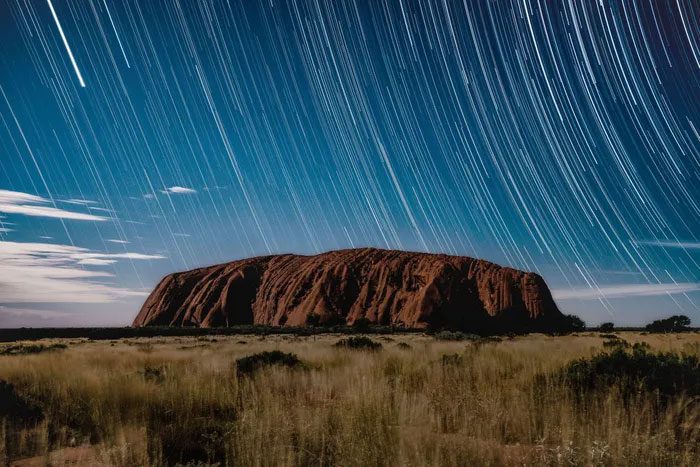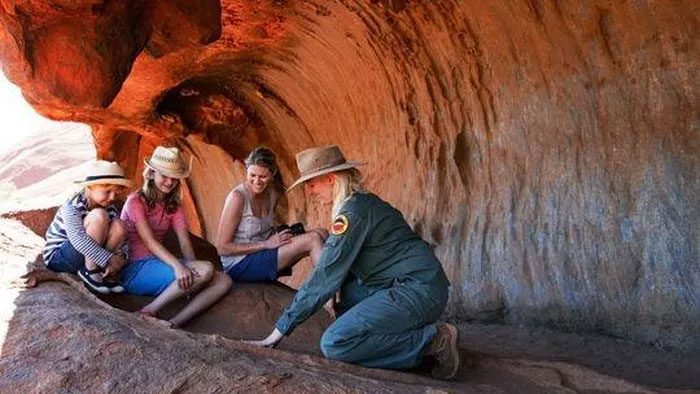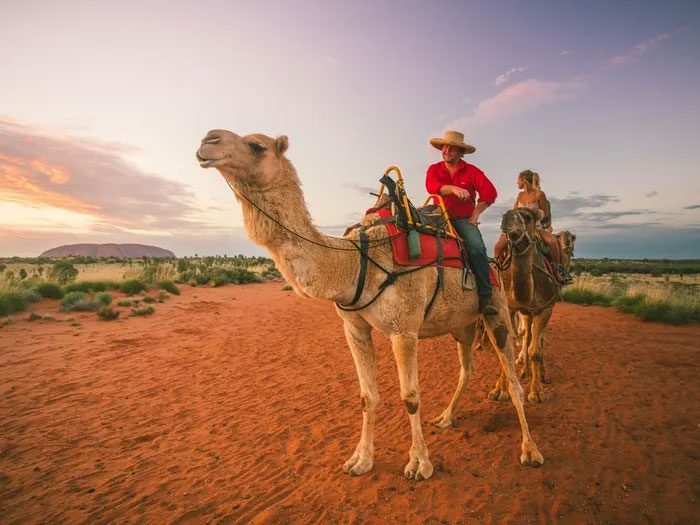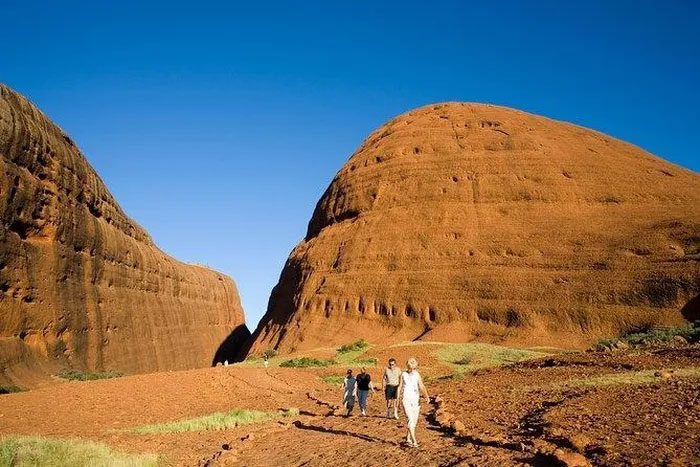Located in the heart of the continent, Uluru is a famous landmark with a 348-meter high red sandstone monolith in the desert. It is also a popular tourist destination in the land of kangaroos.
Uluru – also known as Ayers Rock – is recognized as an icon of Australia. Discovered by explorer William Gosse in 1873, it was named after the former Premier of South Australia, Henry Ayers. Uluru has long been considered a sacred and revered site by many Indigenous Australians in the area. For the Anangu people, the traditional custodians of the land, Uluru is regarded as the navel of the Earth.

Uluru is dubbed the navel of the Earth. (Photo: Unsplash).
A remarkable feature of Uluru is its ability to change colors depending on the weather conditions, climate, and different times of the day. At sunset, the rock glows with a fiery orange-red hue. The rugged monolith features folds, indentations, and ancient carvings that depict the formation process, battles, and the deaths of the ancestors of the Anangu people.
This monolith is located within Uluru-Kata Tjuta National Park (established in 1958 as Ayer Rocks – Mount Olga National Park and renamed in 1993). The national park, which includes both Uluru and Kata Tjuta, was designated a UNESCO World Heritage Site in 1987.
The ecosystem within Uluru-Kata Tjuta National Park is quite diverse. Approximately 400 plant species can be found in the park, including desert oaks, desert willows, several eucalyptus species, and various Grevillea species (a genus of shrubs and trees primarily found in Australia). Wildlife includes mammals such as red kangaroos, various rodents, many reptiles, and amphibians like geckos, lizards, and snakes. There are also over 175 bird species, notably eagles, hawks, and magpies.
The Best Time to Visit Uluru
You can visit Uluru at any time of the year, as the resorts and national park are open year-round. The climate is predominantly hot and dry, with significant temperature variations between day and night. During winter (May to July), the weather is quite cool during the day, but temperatures can drop low enough to freeze at night. Daytime temperatures can exceed 45 degrees Celsius in the hottest month (December). Most rainfall occurs between January and March, totaling around 300 mm annually.
The best time to travel is during the winter months. However, you should bring warm clothing to enjoy the sunrise and sunset, as these are the best times to witness the rock changing colors in the light.
Activities at Uluru
Walking Tours Around the Rock

The Anangu community encourages you to walk around the rock rather than climb it. (Photo: Pinterest).
The Anangu community, the traditional owners of Uluru, encourages visitors to walk around the rock instead of climbing it for spiritual reasons and your own safety. You can join the guided Mala Walk, which departs from the Mala car park each morning.
Camel Rides

Camel riding is one of the exciting experiences here. (Photo: Escape Australia).
Visitors can enjoy the sunrise and sunset illuminating Uluru and Kata Tjuta as they change colors while riding on the back of a camel. From the Ayers Rock Resort camel farm, you can take in panoramic views of the rock while sipping on a few pints of beer.
Exploring Kata Tjuta

Kata Tjuta offers many tours for you to explore. (Photo: Viator).
Make sure to set aside half a day to explore Kata Tjuta. Similar to Uluru, it is about a half-hour drive from Ayers Rock Resort and offers many tours for you to discover. You can book a tour upon arrival if you do not have your own vehicle.
The Field of Light

The Field of Light by artist Bruce Munro. (Photo: BBC).
Another must-see attraction is the Field of Light by artist Bruce Munro, one of the largest art installations in Australia’s history. Over 50,000 light spheres transform the desert landscape into a colorful garden at night.


















































